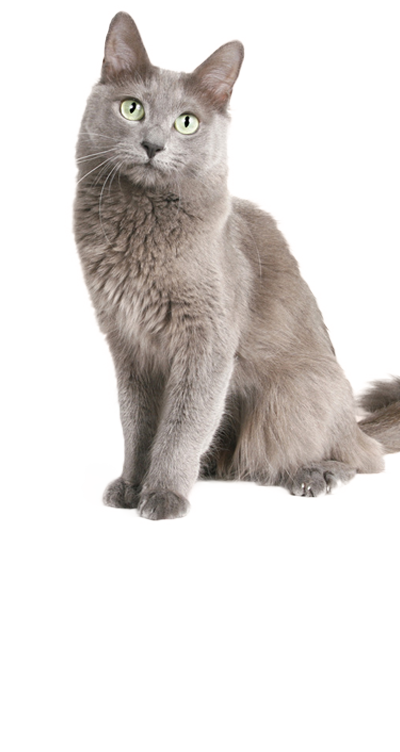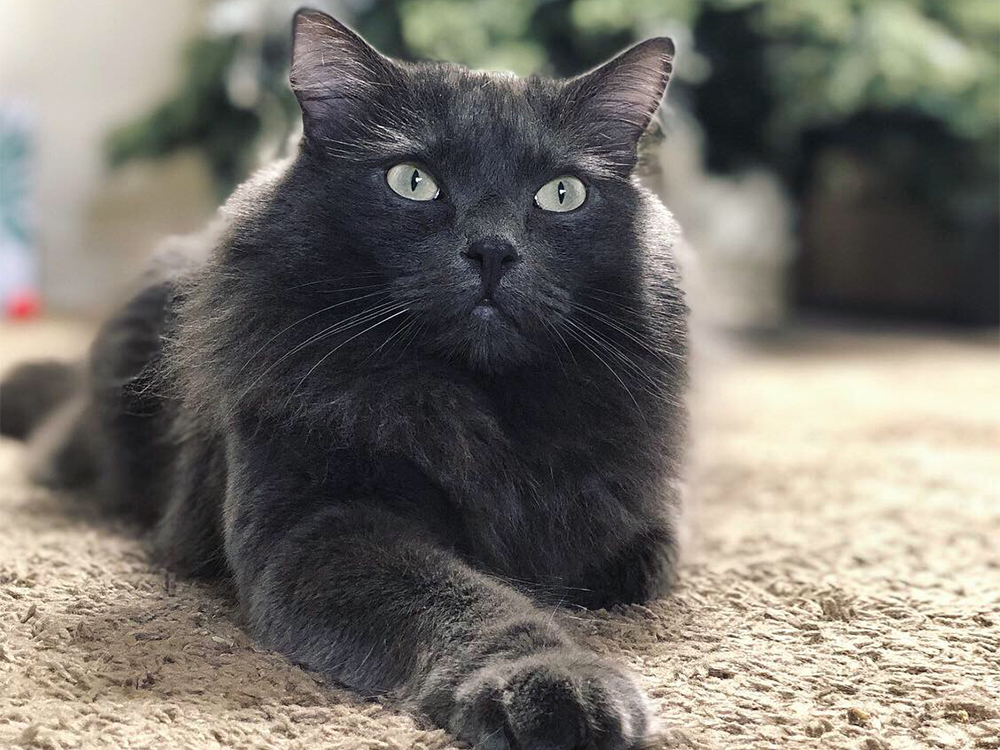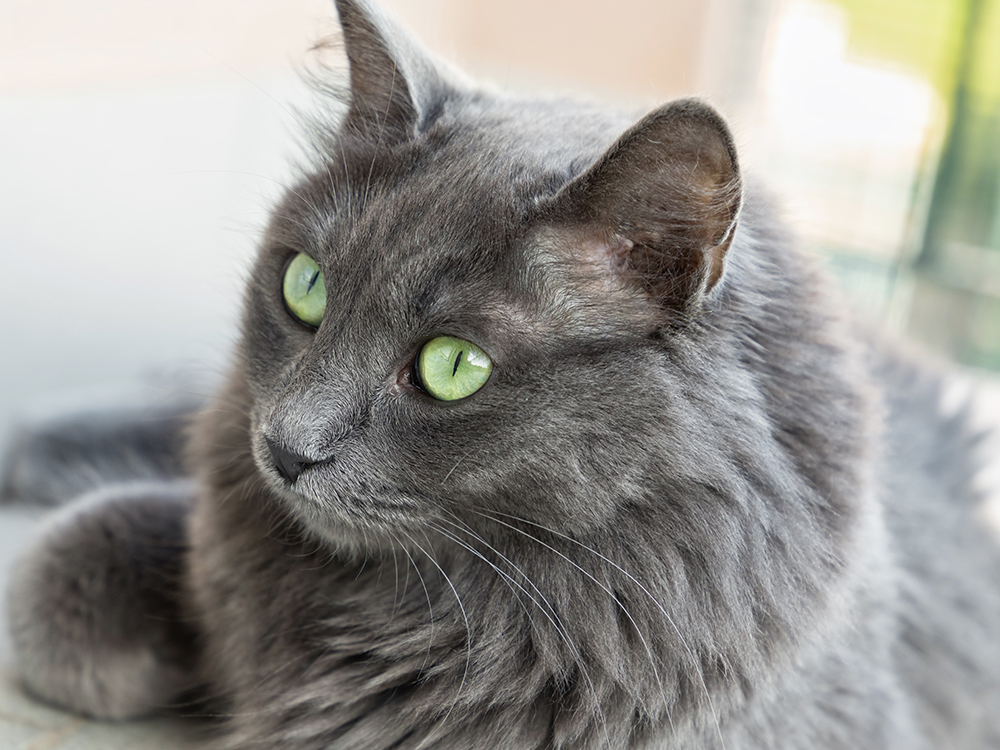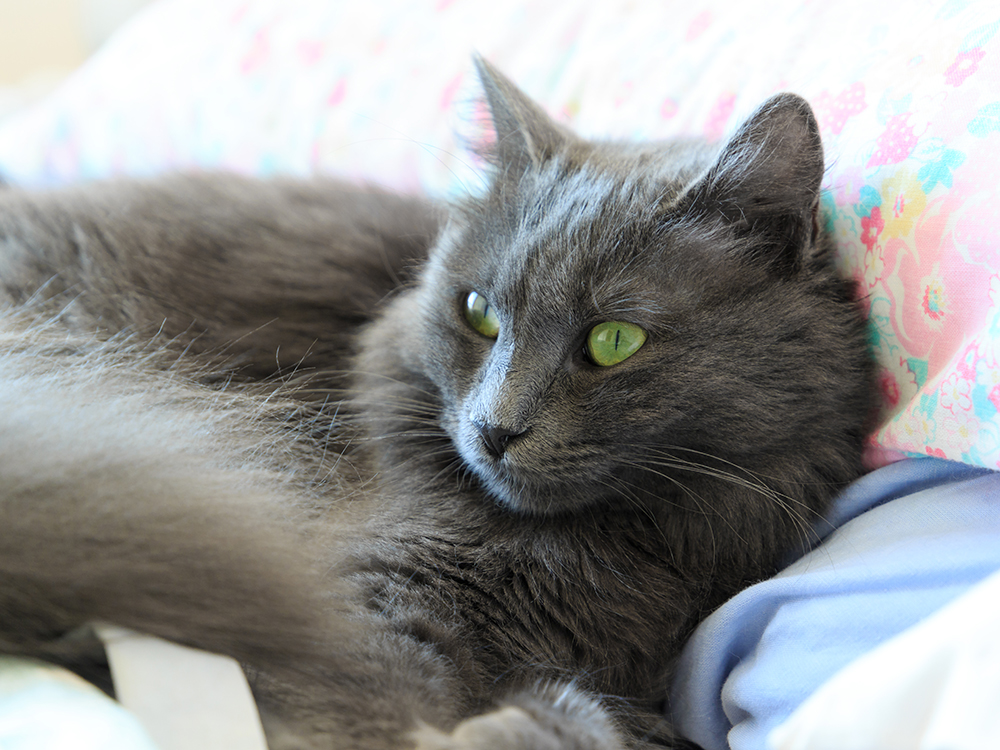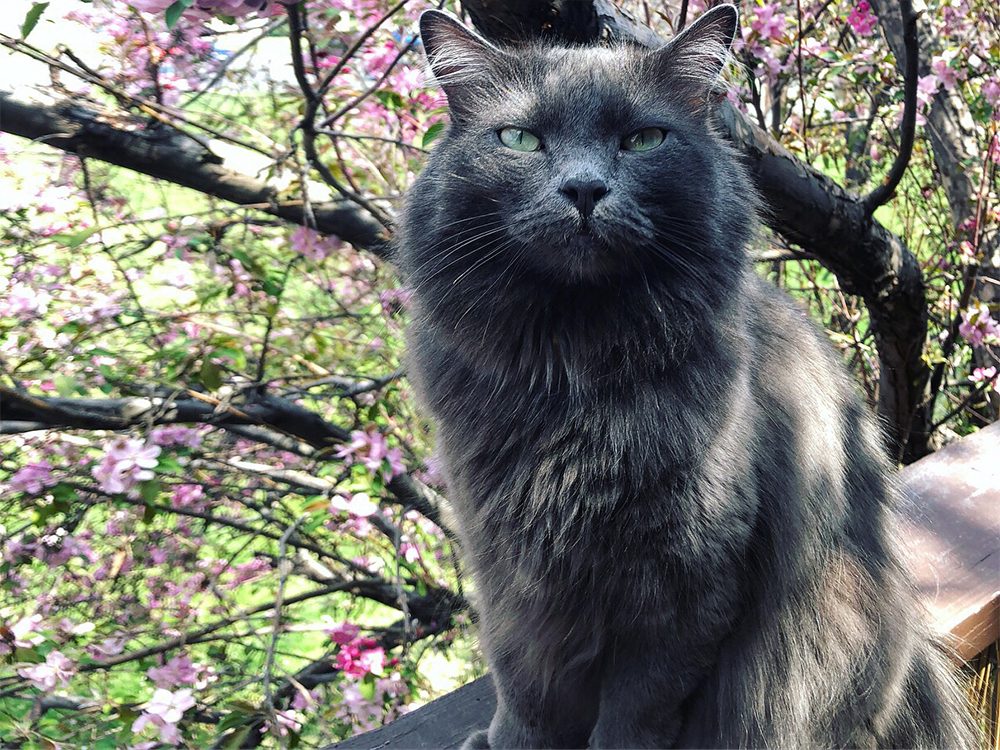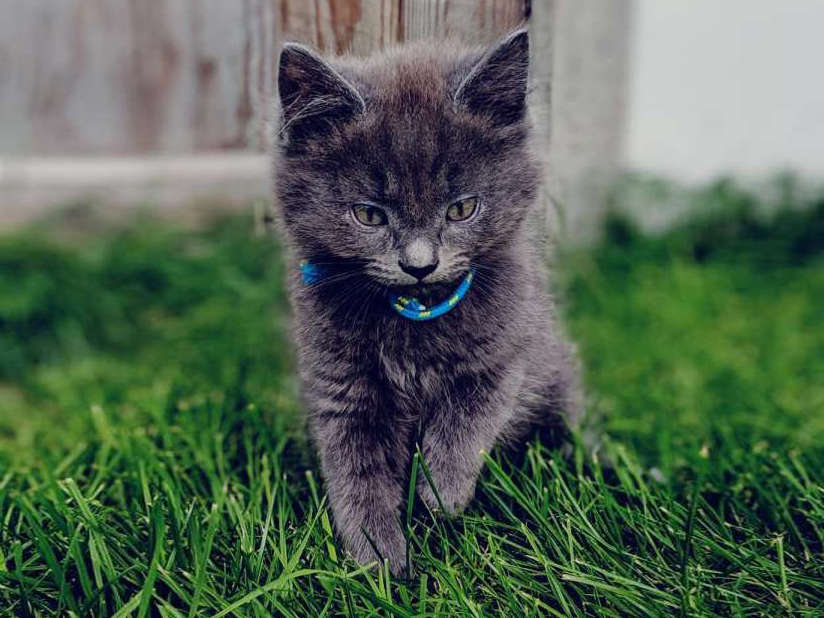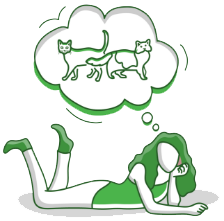
Nebelung Breed Pictures
Vital Breed Stats
| Weight: | 0 - 0 kg M | 0 - 0 kg F |
| Life Expectancy: | 12 - 15 years |
Breed Characteristics
| Size: |  |
| Grooming: |  |
| Trainability: |  |
| Good with Children: |  |
| Good with other pets: |  |
| Affectionate: |  |
| Active Level: |  |
Give a thumbs up if you love the Nebelung

0
More About the Breed
History
The nebelung cat is one of the new breeds developed in the United States. Cora Cobb became a breeder by accident when Elsa, a black domestic shorthair cat, birthed two litters of kittens with the Russian Blue features except for its semi-long coat. It stimulated Cora’s interest and tested if it was possible to create a new breed with these cats. With the help of Dr. Solveig Pfleuger, a geneticist from the American Cat Association, they were able to officially initiate the breeding. Siegfried (1984), from the first litter and Brunhilde (1985), from the second one had the features of a longhaired Russian Blue lookalike. Both names were derived from an epic Germanic poem entitled “Nibelungenlied” (English translation from the song of the Nibelungs). These cats were the first registered felines of the breed. In 1986, these cats were able to produce their own litter. With the influence of Dr. Pfleuger, Cora Cobb made the breeding standard in line with the Russian Blue, but with the difference of their coat length. The breed was then named as the “nebelung.”
Through the successive years, the breed gained popularity fast. The International Cat Association (TICA) was the first formal breed association to accept and recognise a breeding standard for this variety. The breed’s goal is to produce felines with shimmering medium-length coat. In 1997, TICA recognised the breed for a championship competition. In October 2011, the nebelung made its first appearance in the UK at a special exhibition of the Russian Blue Show.
Appearance and Grooming
As elegant as the Russian Blue, the nebelung is a medium-sized feline that weighs 3.5 to 7.5 kgs. The nebelung’s body built is muscular, firm, and long, furnishing a foreign look, with long and slender legs and rounded paws that appears smooth. Its tapering, well-furnished, plumed tail completes the look of exquisiteness.
Another distinguishing feature is its eyes. It has large almond-shaped eyes that are rather large and set widely apart. It usually has the eye colour of vivid green, but for kittens, they may have yellow and should eventually change with maturity. The shape of its head is a modified medium wedge with high and broad cheeks. Its neck appears heavier because of the slight ruff gathered on its neck. The ears of a nebelung may appear pointed with a wide base and is fairly tall with sparse hair on the inside.
The nebelung has a lovely semi-longhaired coat, which is the prominent difference that separates it from the Russian Blue cat. Its coat is dense, but is not coarse; instead, it is soft and silky when touched. The nebelung male can have more ruff than its female counterpart. Its undercoat is covered with thick guard hairs with a much thicker outercoat. However, the desired coat may take two years to fully develop. This breed only has one accepted coat colour; it should be an even and clear medium blue, though ghost tabby markings are accepted for kittens. An adult should have silver tipping that emits a gleaming look.
Considering the nebelung’s thick layer of fur, grooming of this breed requires effort. It should follow regular brushing a couple of times a week or can be daily to prevent the hair from being matted and knotted. It is important to include the roots of the fur as well. Complete grooming with the basics such as nail trimming, teeth brushing, and ear cleaning. The earlier the grooming routine is introduced, the better.
Temperament and Intelligence
The nebelung cat is not only famous for its looks, but also for its pleasant nature. This is a rather shy breed that would take time to settle in a new home. As such, it should be given to having its own advances to its new family. With time and attention that you will give, the nebelung will soon find its comfort in your lap and would often ask for petting from you. After all, it is an affectionate feline that will most likely follow its owner around the house. It forms an exceptional bond with humans that attend to its needs; however, it would be wary around visiting guests.
Further, the nebelung is a smart and energetic cat that would enjoy exploring the environment, marking its territory. It can adapt well as an indoor pet only when provided with plenty of toys or activities to be occupied with. Like other breeds, the nebelung enjoys napping through the day. As such, it is wise to provide an area to snuggle when the mood takes in.
Nutrition and Feeding
The nebelung cat should be given a nutritious diet that fulfils its nutritional needs. It should be consistently given the same food following the same feeding schedule. If there are changes to its diet, those must be done gradually to prevent digestive problems.
The serving portions should depend on the cat’s weight, age, and activity level. Its diet must include at least 25 per cent protein and just 5 per cent carbohydrates.
Health and Exercise
On average, the nebelung’s life expectancy ranges from 11–16 years. This cat breed is amongst the healthiest and is not known to be affected by hereditary health issues. However, the nebelungs may tend to like their food more. As such, it is important to strictly follow a quality diet with the same amount.
Further, ensure that this feline gets enough exercise and its diet managed well to prevent it from becoming overweight. Being an intelligent breed, it should be provided with toys and activities that will also challenge its mental abilities.
Cost of Ownership
A pedigreed nebelung kitten will cost £100 higher. Average insurance expenses would cost £14 (basic) to £25 (lifetime) monthly. Food costs may range from £15–£20 each month. For vaccinations, boosters, annual checks, and other veterinary costs, pet care costs may add up to more than £500 each year.
On average, a nebelung cat owner will spend about £30–£50 per month. The insurance costs can also affect this estimate. For its entire lifetime (11–16 years), the expenses can be as low as £3,960 to as high as £9,600 overall. This estimate does not include the initial costs incurred in acquiring this cat.
Is a Nebelung Right for You?
- A nebelung is a shy breed that is soft-spoken and has a gentle nature.
- It is reserved around strangers or unfamiliar guests.
- It is very affectionate to selective humans, mainly to those who attend to its care.
- As this feline belongs to longhaired cats, grooming requires a couple of times a week or almost daily brushing.
